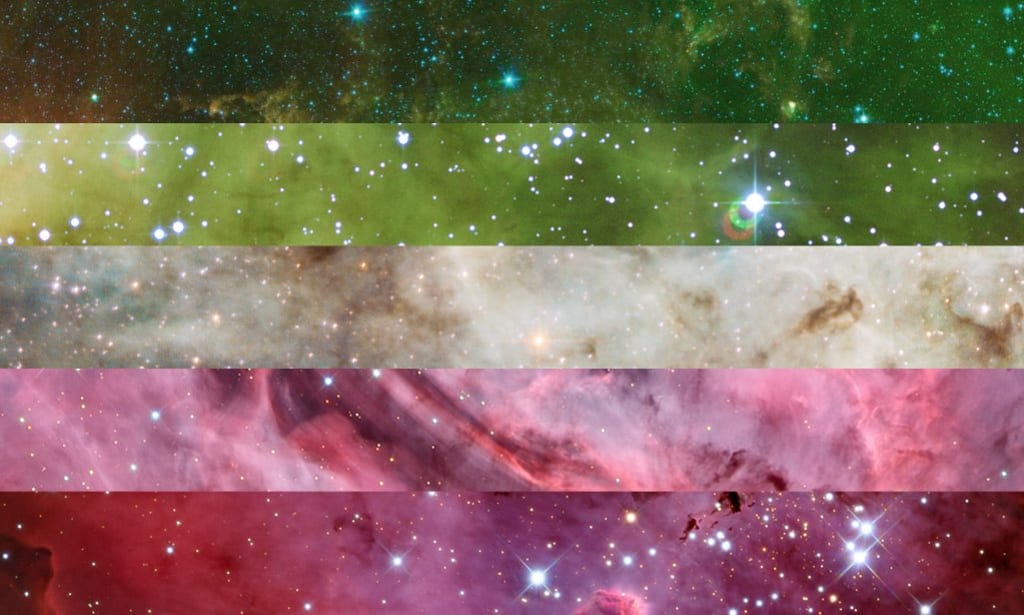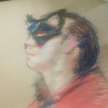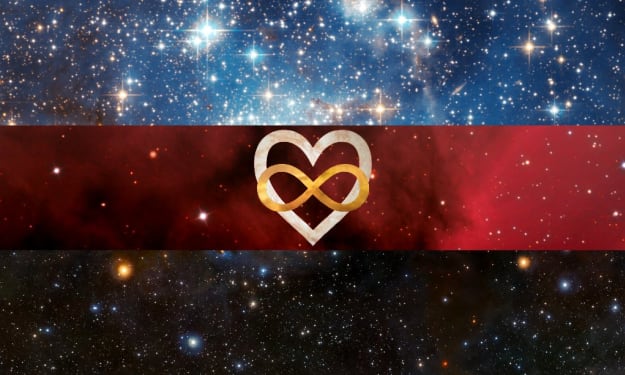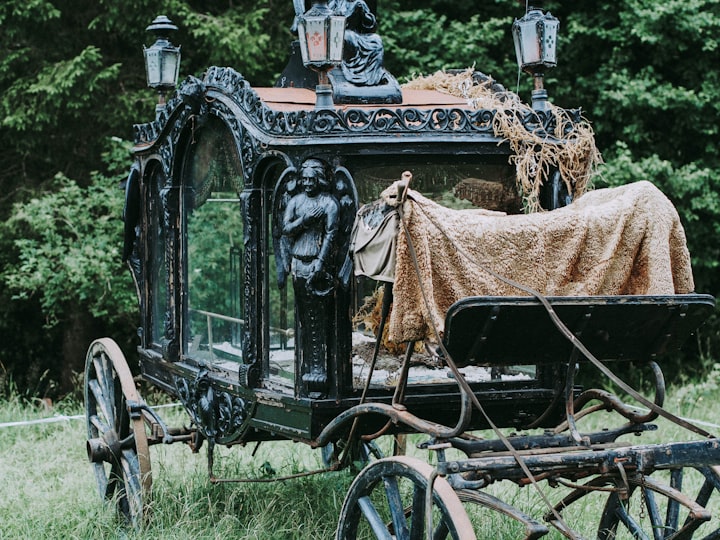You’re a Wizard, Neo: Queer Culture in Fantasy Fiction (a VENUS VALLEY chapter)
Queer Philosophers’ Forum, pt. 15

A fun fact & fantasy filled chapter is here, queerly beloveds - if you’ve just found me and just thought “a fun fact and fantasy filled chapter of what?”, let me tell you where you are: I’m releasing my LGBTQIA+ centric philosophy book chapter by chapter, so my rainbow flag flying readers can debate, discuss, question, contribute, giving me insights & inputs which become my edits, so the finished book includes all our views and voices. Welcome to Venus Valley: Queer Philosophers’ Forum.
~*~
Larry feels different from boys at school for wanting to play with girls, and in college for wanting to wear girls' costumes and play girls' roles in theatre. Crippling social anxiety brings chronic insomnia, to the point of contemplating suicide. Sitting in an empty subway station at midnight, waiting for a train that won't stop, suddenly this young life is saved by an anonymous man approaching down stairs, reflecting the face looking at him in the lenses of his glasses. Unable now to go through with it, instead managing to find company and community in internet chat rooms and leather kink and fetish clubs, Lana embraces her true self, finding girlfriends who love her for who she really is. She trades her blue antidepressant pills for red hormone pills.
Andy, proud of big sister Lana's transition, comes out herself, when a right wing tabloid tries to force an interview about her transition to living as Lilly. She writes in a magazine: "But these words, 'transgender' and 'transitioned' are hard for me because they both have lost their complexity in their assimilation into the mainstream. There is a lack of nuance of time and space. To be transgender is something largely understood as existing within the dogmatic terminus of male or female. And to 'transition' imparts a sense of immediacy, a before and after from one terminus to another. But the reality, my reality is that I've been transitioning and will continue to transition all of my life, through the infinite that exists between male and female as it does in the infinite between the binary of zero and one. We need to elevate the dialogue beyond the simplicity of binary. Binary is a false idol. Now, gender theory and queer theory hurt my tiny brain. The combinations of words, like freeform jazz, clang disjointed and discordant in my ears. I long for understanding of queer and gender theory but it's a struggle as is the struggle for understanding of my own identity. I have a quote in my office though by Jose Muñoz given to me by a good friend. I stare at it in contemplation sometimes trying to decipher its meaning but the last sentence resonates: 'Queerness is essentially about the rejection of a here and now and an insistence on potentiality for another world.' So I will continue to be an optimist adding my shoulder to the Sisyphean struggle of progress and in my very being, be an example of the potentiality of another world."
Lilly & Lana are, of course, if you don't know or haven't guessed, the Wachowskis, creators of The Matrix - which Lilly encourages us to look back on "through the lens of our transness." Let's do that!
"Call trans op received", reads the screen we zoom in on to start the first film. This phrase doesn't exist in switchboard or coding jargon, and was invented for this scene. We return to the same screen to end the first film, reading "SYSTEM FAILURE", zooming in to the black space between "M" & "F".
"I thought you were a guy," Neo tells Trinity when they meet. "Most guys do," she replies. Later she revives Neo with a kiss, gender-swapping the "Prince Charming" stereotype.
Team member Switch wears white where the team wear black, to make it easy to tell which one is Switch, since they were meant to be played by one gender inside and another outside the Matrix.
Despite enemy Agent Smith continually demanding Neo answer to his old name, "Mr. Anderson", instead Neo is told by mentor Morpheus: "Right now I imagine you're feeling a bit like Alice - tumbling down the rabbit hole?" And by rival Cypher: "Buckle your seatbelt Dorothy, 'cos Kansas is going bye-bye."
Judy Garland, cinema's iconic Dorothy, was a queer icon for how she had to be one person in public but another in private, just like they did, and they rallied behind her when her health and career suffered after she was no longer marketable by the studio as darling Dorothy, but stayed hooked on the drinks and drugs they used to control her sleeping and waking routine. Time magazine critiqued her final performance in 1967: "A disproportionate part of her nightly clique seems to be homosexual. The boys in tight trousers roll their eyes, tear at their hair and practically levitate from their seats, when Judy sings... Judy was beaten up by life, embattled and ultimately had to become more masculine. She has the power that homosexuals would like to have, and they attempt to attain it by idolizing her." Garland said that when she died, she imagined the [word for gay men I won't repeat] standing by her grave waving flags singing 'Somewhere Over The Rainbow'. Designer Gilbert Baker and doomed gay Jewish politician Harvey Milk gave us the original rainbow flag a few years later, for Pride marches marking the anniversary of the Stonewall uprising the day after Garland's funeral. Meanwhile, in sequel Return To Oz by L. Frank Baum, Princess Polychrome tells her: "You have some queer friends, Dorothy." But she replies: "The queerness doesn't matter, so long as they're friends." When Dorothy asks Scarecrow which way to go on the Yellow Brick Road he says, "Of course some people go both ways!" And Mombi the Witch in The Marvelous Land Of Oz turns Princess Ozma into a boy named Tip to steal her throne, wiping her memory of being a girl until she rediscovers herself with Dorothy's help. Is it any wonder "Friends of Dorothy" became a nickname for gay men to each other?
The Wizard of Oz and all its sequels laid a Yellow Brick Road for series like The Matrix to follow, taking "THE HERO’S JOURNEY" - a repeating pattern found from ancient folklore to modern fantasy, where a young boy grows into a great man by leaving home for adventure - and giving the centre seat to a girl. So it's fitting so many films based on the modern study of it, Joseph Campbell's The Hero With A Thousand Faces - from Star Wars to the 1990's Disney renaissance - left us with iconic girl characters from Princess Leia to Belle.
The Wachowskis were criticised for Orientalism - which, if you remember from my section on eastern and middle-eastern philosophy, is treating eastern & middle-eastern aesthetics as "ethnic" or "exotic" and so alien, otherworldly, fantastical - and for appropriating racial struggle by comparing it to their own battles. And they were criticised by the writer of the book that even more directly inspired the philosophy of the first film, and coined Morpheus' phrase "the Desert of the Real": Simulacra & Simulation, by Jean Baudrillard.
The centre metaphor of Baudrillard's book is the story of a people who tried to create the most perfect all-encompassing map of their country, a quest which consumed them to the point where the real country beneath the map withered and died. Where once the country was real and the map was an idea, there now exists a new state - HYPERREALITY - in which the map is real and the country is a memory. Here, reality and existence are shaped by the process of shifting cultural ideas, rather than the other way round. I can see it in my own deconstruction of my old Christian ideals, where the Church itself and the Bible itself become idols of worship. The reason there's a label "spiritual but not religious" is because there's such a thing as religious but not spiritual - outer form, without inner force. Some extreme evangelicals even reject Jesus’ words, as "too soft" for their war on the culture around them.
But back to The Matrix. Baudrillard was pretty open about how the Wachowskis completely misunderstood him; so the sequels were deconstruction, instead of continuation, of the first film. Which gave the Wachowskis chance to critique how they themselves were completely misunderstood by online "Redpill" forums: rejecting feminism, for how it turns men and boys trying to protect patriarchal privilege into "Involuntary Celibates" ("Incels"). These self -styled "Men's Rights Activists" can be spotted online calling the society rejecting their privilege "The Matrix"; and their new perspective "taking the red pill"; calling themselves "Nice Guys" when they "finish last" with women; and replying to trends like the #MeToo movement, which empowered women to expose abusers, with "#NotAllMen". It's hard not to see them in Agent Smith's co-opting rebellious lingo in the sequels that the resistance used in the original, invading their world, trying to bring order to chaos by turning everyone into himself.
Which brings us neatly to someone who has to come up if we're talking about The Matrix through a trans lens: Buck Angel. Buck is a trans man, but towards other trans people, he's a TRANSMEDICALIST, or BIOESSENTIALIST: the idea that the body and its treatment is all there is to "the trans issue". To this thinking, there are transvestites - men dressed like women - or there are transexuals - who've “had the surgery” - and that's it. Anything more, like nonbinary identity or intersex biology, is medical disorder, mental delusion, kink or fetish (Buck marketed himself in the adult film industry as "the manny with the fanny"). To these kinds of thinkers it's fine for adults to "have it done", like piercings or tattoos; but teaching children is like letting them drink or watch porn. Buck outed Lana Wachowski as "the cross-dresser who stole my wife"; even though this all didn't go public until after the first film, it's hard not to see the striking resemblance between Buck and villain Cypher. Transmedicalists and bioessentialists, bizarrely, tend to take the same side of the "trans debate" as homophobes and transphobes, yet seem surprised when that turns against them. Comedian Tom Neenan, of the "Tom Neenan Is Not All Men" podcast, started a Twitter trend in 2016 with the joke, "I never thought leopards would eat MY face, says person who voted for the Leopards-Eating-People's-Faces Party." At time of writing, the leopards are coming for Buck Angel's face, which would be funny if it wasn't sad.
The simple standard reply to Leopard-voters who call us "social contagion", or "Trans-Trenders", is, as you'll know if you read any of my stuff, that queer content has always been here. The Blazing World, in 1662, tells the story of an anonymous lady narrator (Naratress? Is that a word? It is now) escaping pirate captors through the Northern Lights into a parallel paradise realm. It's love at first sight between her and the Emperor and soon she's Empress, and she devotes her hybrid animal-people subjects to arts and sciences to teach her all there is to know of this new bejewelled world. It’s their philosophy that bodily material is masculine, while immortal spirit is feminine; and we’re both, so we’re hermaphrodite beings. The only passage open between her old and new worlds is dreams, so she calls the dreamer whose dreams are shaping the Blazing World - the author (authress?) Lady Margaret Cavendish inserts herself into the story here - and a “deep platonic love” relationship develops between the two women as they dream of each other. When patriarchal forces of physical Earth become aware of the shining resources of the matriarchal dream planet, they come to conquer, but she decks herself in jewels of her realm, scaring them away with a vision of her as its goddess.
I wonder if Neil Gaiman read it when he was writing The Sandman: where dream self-image is as much part of self as physical body; mind as real as brain; and Desire the sister-brother of Dream, whose bodily self transcends biological sex. When I think of The Sandman, I laugh at critics of its new audiobook and TV adaptations complaining about Neil jumping on the “woke millennial bandwagon”, blissfully ignorant that queer content was part of The Sandman since it was written in the 1980s from ideas in the 1970s.
Honorable mention, before I finish, goes to The Barbie Movie, a mix-&-match of ideas from The Wizard Of Oz and The Matrix! For viewing a wondrous women’s world through eyes of men left on its sidelines; viewing patriarchy through eyes of women it leaves confused and frustrated; including transgender actress Hari Nef as a stereotypical girl, and macho actor-wrestler John Cena as a girly mermaid; and its one-off character Allan, who’s neither a Ken nor a Barbie, but “just Allan”, and is “confused about that”. These were enough QUEER CODING and QUEER BAITING - making female characters masculine, and male ones feminine, to show queer subtext, without being plainly affirming or inclusive - that it was banned in some countries with less progressive cultures, for “alleged LGBTQ+ content”, despite not having anything or anyone openly queer in it. Unless you include the fact they’re male and female without having genitals, which was clearly too much for some!
~*~
To subscribe to catch the continuation of this section, into my next chapter on sexual identity in Star Trek, click HERE;
To join the group where you can debate, discuss, question, contribute, on the book of faces, click HERE;
And to be generous enough to donate something big or small to support turning this blog into its final book form, click HERE.
About the Creator
Mx. Stevie (or Stephen) Cole
Genderfluid
Socialist
Actor/actress
Tarot reader
Attracted to magic both practical & impractical
Writer of short stories and philosophical musings
Reader insights
Outstanding
Excellent work. Looking forward to reading more!
Top insights
Compelling and original writing
Creative use of language & vocab
Easy to read and follow
Well-structured & engaging content
Excellent storytelling
Original narrative & well developed characters
Expert insights and opinions
Arguments were carefully researched and presented
Heartfelt and relatable
The story invoked strong personal emotions
On-point and relevant
Writing reflected the title & theme






Comments (2)
One of the best in thr series!! ❣️🏳️🌈x
I might add that it's not just the infinite number of identities between F & M but an even greater infinity of identities beyond them. Marvelous exploration of so many of the themes most readers/viewers simply gloss over without paying attention. I still find it difficult to understand those who complain about "wokeness" & hurl it as an insult as though ignorance & complete lack of imagination or creativity or any desire to learn & grow were things to be celebrated.